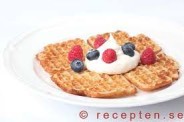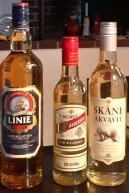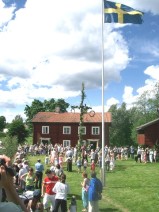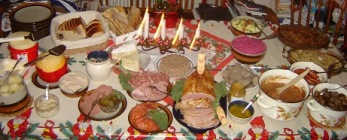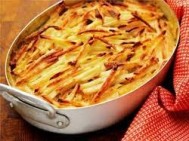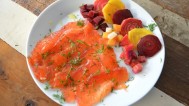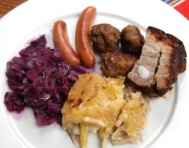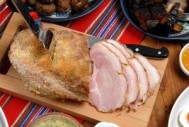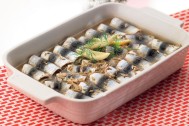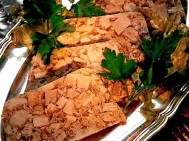SWEDISH CULINARY TRADITIONS
In the social life in Scandinavian countries, traditions play an important role!
Maybe because of this, almost every Swede, living or working outside Sweden, feels homesickness (hemlängtan) some special times a year.
Also, consuming typical Swedish dishes or treats belongs to these traditions.
In fact, the ambiance around a meal being served brings memory of 'home'.
An example is the concept 'julbord' (Christmas table) calls for a special longing. Of course restaurants make use of that type of feelings by serving their guests typical meals (and drinks) during the whole month of December.
TRADITIONS AT SPECIFIC HOLIDAYS
Because in Sweden, state and (Lutheran) church historically were intertwined, many culinary traditions still are related to the specific religious holidays, even if the belief rate has lowered dramatically during the past decades. It doesn't bother anyone that many traditions relate to religious events and this counts even less where it concerns culinary traditions.
Het percentage gelovigen en kerkgangers in Zweden is absoluut niet groter dan in Nederland.
Below we summarize some Swedish culinary traditions.
Fettisdagen - Semlor
Fettisdagen means literally fat Tuesday. Historically the period before Easter was a 40 days fasting period. in the days preceding to this period, people ate as much fat food as possible to help their body through the fast.
The kind the pastries they ate were the semlor (also called fettisbullar or fastlagsbullar).
Semlor are cupcakes with 'whipped cream and marzipan.
Fasting belongs to the past, but the Swedes still eat their semlor on Shrove Tuesday.
But you can buy them anytime from New Years Day on.
Våffeldagen - Swedish Waffles
On March 25th many Swedes bring out their waffle irons en bake and eat waffles.
This tradition is due to a misunderstanding: actually one celebrated Vårfrudagen (Lady Day). In Sweden this was transformed into Waffle-day, which has given us a very good reason to eat lots of waffles that day, March 25th. The dish has become popular enough that they eat it around the year, especially during outdoor market and funfairs.
Snapsvisor
Snapsvisor are an important part of celebrating traditional and family festivities in all Scandinavia.
Singing drinking songs is also a lively part of Scandinavian student culture. Sometimes Universities even deliver detailed explanation to the students from abroad, on how to sing and behave during formal dinners.
Especially at the start of festivities, besides wine and beer, the participants usually drink brännvin and aquavit. Aquavit is a strong liquor from Scandinavia. The minimal alcohol percentage is 37,5%. The liquor is won, like the vodka, from potatoes or grain and it is distilled twice. During the second distillation, the herbs are added. Characteristic is the use of cummin and dill. Aquavit is, in principle, colourless, it gets its yellow colour by addition of food colouring (caramel E150).
Whitsuntide is a typical moment of going outdoors with the family. Traditionally it was a religious festival.
Because Whitsuntide often happens during springtime and the weather sometimes is nice, families get out of their homes. If this fish bite well a spontaneous barbecue might be a good idea. Or a more prepared family picknick may be planned...
Midsommar
Midsummer night is celebrated on the Friday closest to the 21st of June. Everywhere in Sweden, maypoles are decorated with leafs and flowers and jointly lifted. A maypole may differ per county, mostly it is like a cross with decorated wraths on the crossbar.
After the pole has been decorated and raised, the dancing around it may be started, accompanied by accordion and guitar music, while the participant sing the typical midsummer songs. E.g. "Små grodorna", "Prästens lilla kråka" en "Vi äro musikanter".
Slowly the participants will get hungry and thirsty, and it is time for a traditional meal.
The food consist of small new potatoes, cooked with dill and swedish marinated herring (sill) with sour cream and chives. Most often the adults drink beer and schnapps.
The traditional dessert is strawberries with whipped cream.
Kräftskiva (Crayfish tradition)
A highlight on the Swedish calendar is the ‘kräftskiva’ (crayfish party). This annual festivity is celebrated while eating crayfish with a lot of side dishes, drinks and happy drinking songs. It is a typical summer party, cherished by everyone.
The history goes back to the sixteenhundreds, when it became popular with the royal family. In the seventeenhundreds, the Swedes started to eat crayfish on a bigger scale. The name crayfish party came into use in the 1930's when it was supposed to derive from the ritual of 'kräftsupa', consuming crayfish and lots of alcohol.
Lucia - festivity of the returning light
In Sweden, the feast of Santa Lucia preludes the Christmas period. The tradition originates in medieval Västergötland and was spread to the rest of Sweden and the neighbouring countries during the last century. The traditional custom includes elements of pre-Christian midwinter light festival.
Early in the morning, girls in white dresses with red sash and candles on their head awaken the family members with food and drinks, while singing the special Lucia songs.
Traditionally, every village elects it's yearly Lucia.
During the festivity one eats 'Lussekatter' (yellow saffron roles) and pepparkaka (gingersnaps). And drinks coffeeand Glögg (Swedish glühwein).
Christmas - Julbord
The summum of the culinary Swedish traditional festive meals is the 'Julbord', a large table with many different dishes.
The Christmas party is a real family tradition in Sweden, for the children, parents, grandparents, uncles, aunts and friends.
Below we show you a variety of dishes you may encounter at the rich Christmas table.





